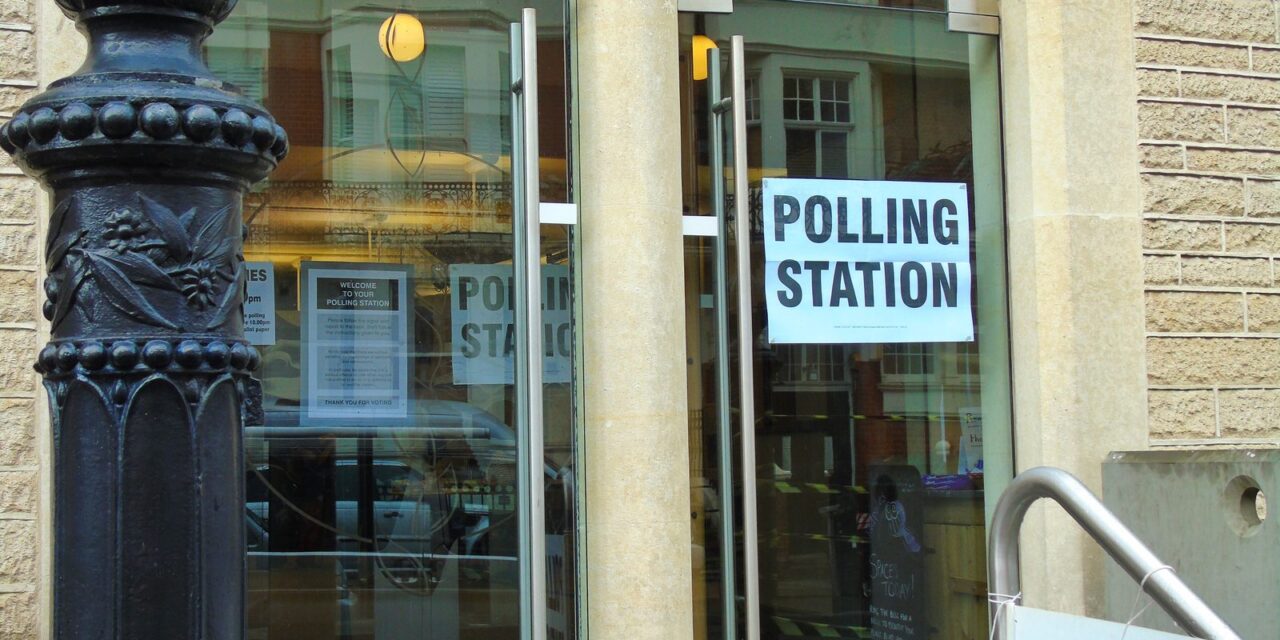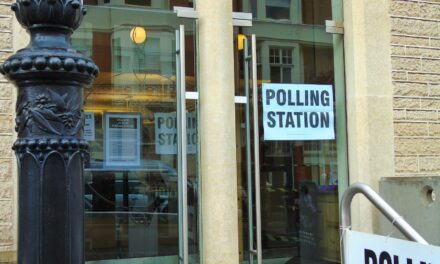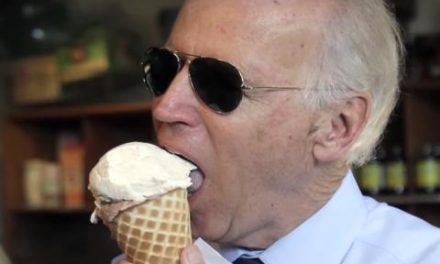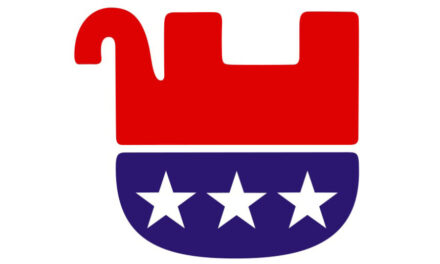Cross-posted at Future Majority.
I’ve had time to sift through what data is available from Young Voter Strategies and CIRCLE. The bottom line is this – youth turnout increased for the third straight year, and millenials chose Democrats over Republicans by 22 percentage points (60%-38%) – more than double any other age demographic.
Democratic Preference by Age Demographic
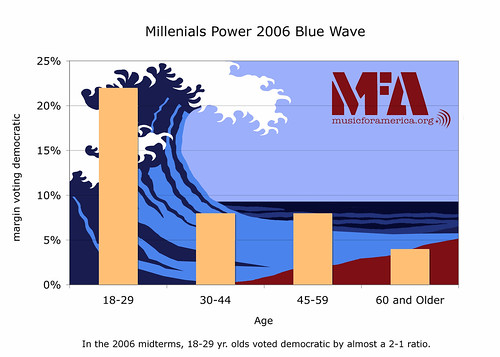
In Montana, where Jon Tester beat out Conrad Burns, I’m hearing that young voters made up 17% of the electorate and that their swing towards Democrats may have been the deciding factor in Tester’s election.
If this is a wave election, that wave is being fueled by young voters and their growing allegiance to progressive politics.
Here’s what we know so far based on exit polls, preliminary precinct reporting, and census data from March 2006:
(Some of this information I received via email and conference call from people at CIRCLE and YVS, and isn’t yet available online. So sorry if this is a little light on links. In the coming days I will post more updates as new data becomes available.)
TURNOUT
- At least 10 million 18-29 year olds voted yesterday(pdf). This is 2 million more than voted in 2002, and 1.4 million more than 1994. As more data comes in, this number is expected to rise.
- Our turnout rate was 24%. This is an increase of 4% from 2002(pdf). As more data comes in, this number, too, may rise.
- Our share of the electorate increased from 11% to 13% (pdf). Millenials are increasing their turnout rate faster than any other demographic, and rising turnout across the board in 2006 makes this number all the more impressive.
Most importantly:
- In 36 “youth dense precincts” in Colorado, Michigan, Ohio, Wisconsin – which were targeted by the student PIRGS – turnout was 6x the national average.
Conclusion: Young voters are increasingly engaged and are becoming a force in electoral politics. If you ask us to vote we will, and our growing numbers could be the difference in elections across the country. If this trend continues, young voters may hand us the presidency in 2008.
PARTISANSHIP
- Young voters chose democrats over republicans by 22% points (60% to 38%). This is more than double every other demographic.
- A pre-election poll indicates that young voters were highly dissatisfied with Bush, but they generally had more positive feelings about their conrgressperson.
Conclusion: Young voters are a huge asset for progressives, but, just like in 2004 when we cast our ballots against Bush (but not for Kerry), this was a vote for change. A vote against Bush, not for the Democrats.
TACTICS
In 2004, youth groups sent a drum beat of messages to the media – peer to peer, face to face contact was the way to reach young voters. That strategy has come to fruition this year.
- When CIRCLE reports on the effectiveness of GOTV tactics, it will report that boots on the ground, face to face contact was the most effective way to reach youth in 2004.
- Social Networking and Text Messaging – the media darlings of this cycle – will be shown to have played only a small part in getting out the vote.
Conclusion: It takes a cycle or two for folks to learn how to use new strategies. What limited data we get on text messaging and social networking will get put to good use tweaking our strategies. Look for these tools to either live up to the hype or die in 2008.
SUMMARY
Research shows that if you can get a young person to vote for your party 3 major elections in a row – you’ll have 75% of those voters for life. Right now we’ve seen two elections where Millenials are turning out and making significant contributions to the progressive movement. We’re turning out in bigger and bigger numbers, and as more of us turn 18, we’re becoming a larger share of the electorate.
If you ask us to participate we will. Now its up to the democratic party, and all the instruments of progressive politics, to reach out to our generation and help bring as many of us into the movement as possible. This means more money put into young voter programs, more training, more internships – genuine investments in building the infrastructure to engage and train Millenial voters.
This is the future progressive majority in action, let’s secure it for generations to come.

